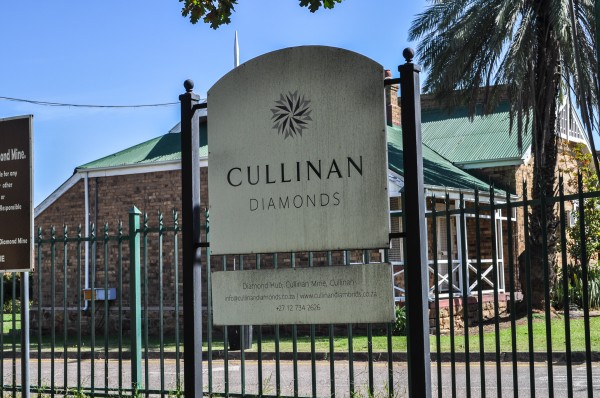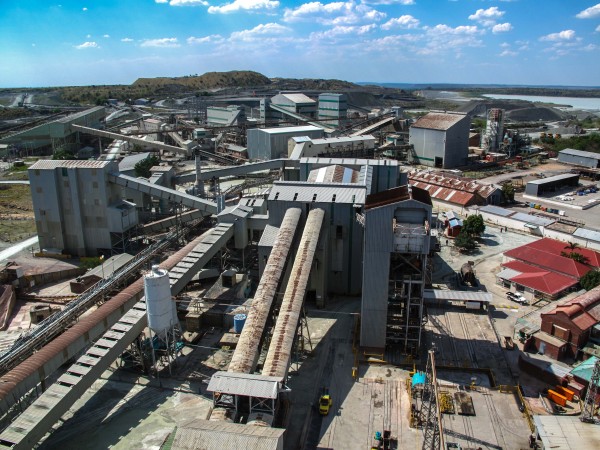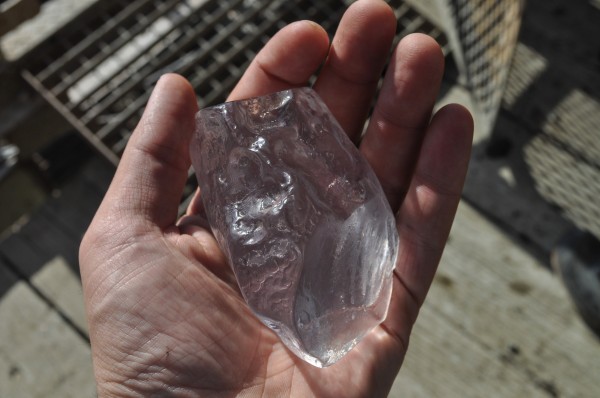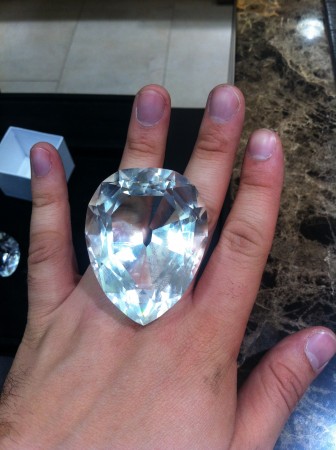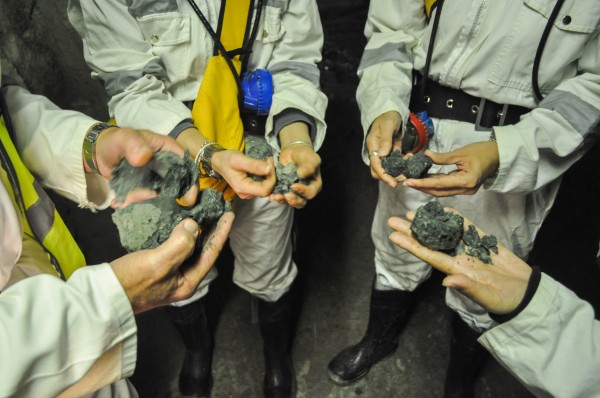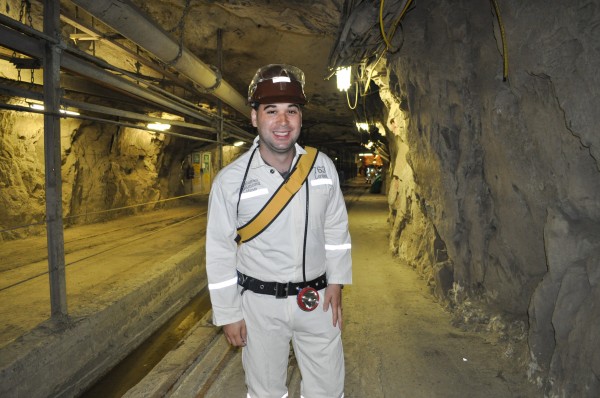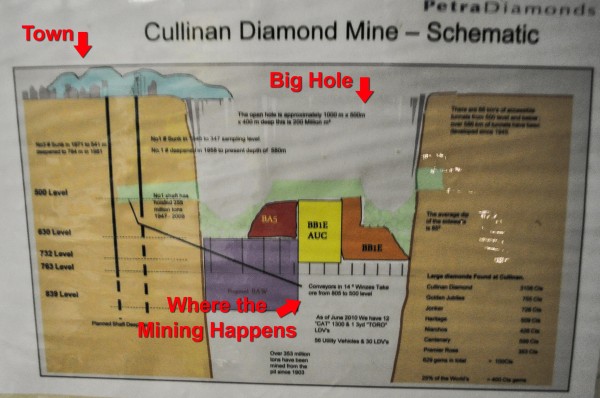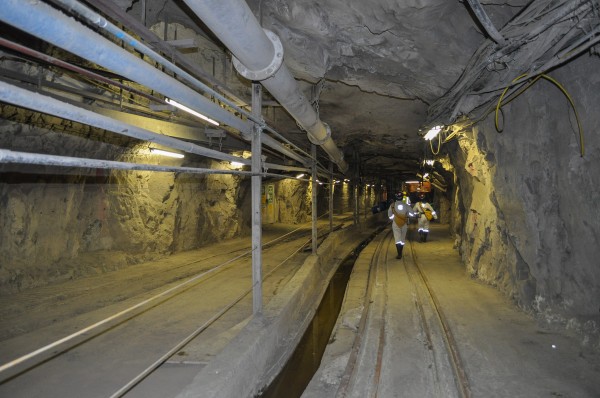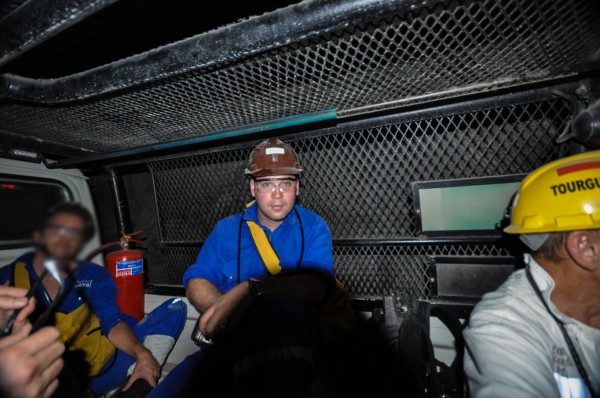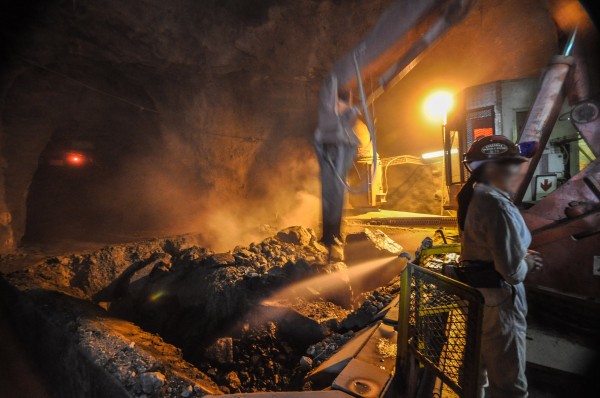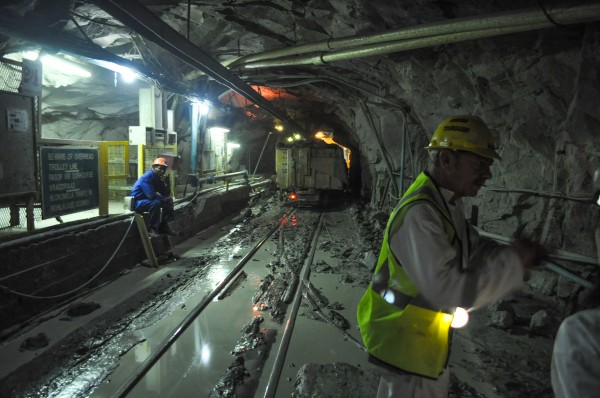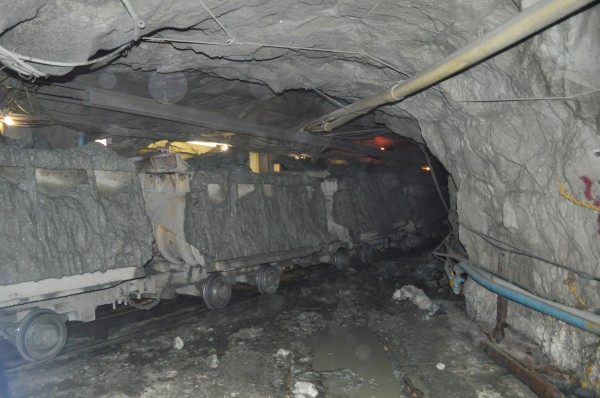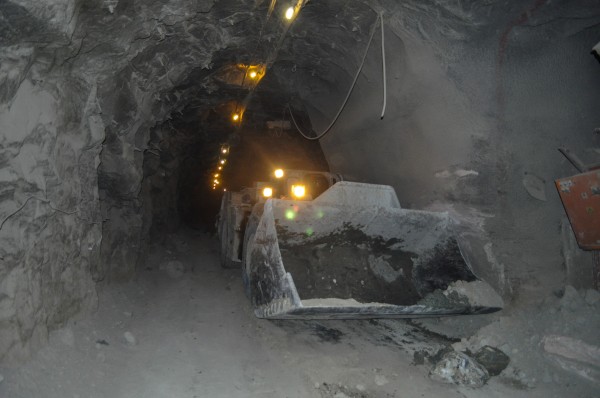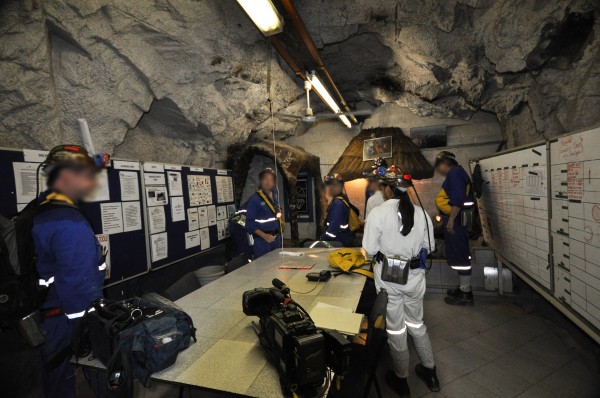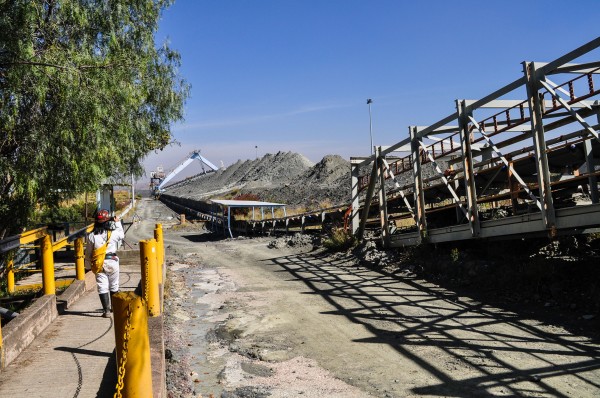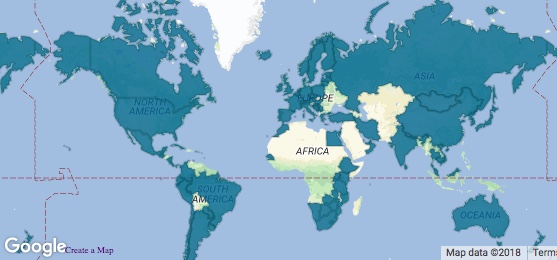While traveling in South Africa, I had the unique opportunity to visit a working diamond mine. The Premier Mine (also known as the Cullinan Mine) is the only working diamond mine in the entire world that you can actually visit. Located just 25 miles east of Pretoria, it takes about an hour to reach the mine from Johannesburg.
South Africa is known for its diamonds. Next to the Kimberley mine (famous for the process of the same name) the Cullinan may be the most well known. Why so famous? Well in 1905 they unearthed the largest rough gem-quality diamond ever found, at 3,106.75 carats! If you’ve ever been to London and visited the British Crown Jewels at the Tower of London, you’ve seen one of the stones that were cut from the Cullinan diamond – the 530.4 carat Great Star of Africa, mounted in the head of the royal scepter.
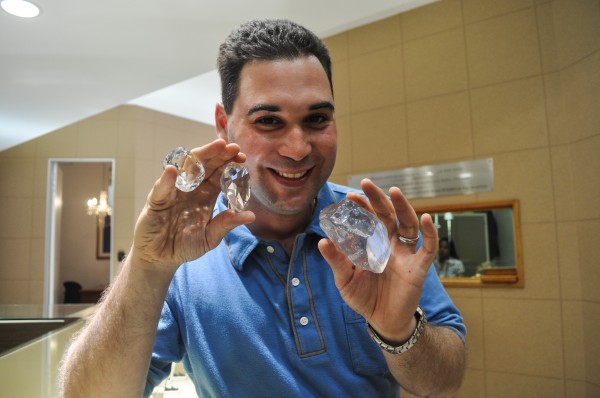
3,106 carat Cullinan diamond in my left hand, 530 carat Great Star of Africa and 317 carat Second Star of Africa in my right hand. All replicas, unfortunately.
Where Do Diamonds Come From?
Diamonds come from kimberlite, which is an igneous rock formed deep (as deep as 280 miles!) in the earth’s mantle. The kimberlite erupts upward into a vertical structure called a kimberlite pipe. A diamond mine harvests the raw diamonds from a kimberlite pipe by starting at the surface and continuing further and further underground, following the kimberlite. For this reason, a diamond mine often looks like a giant hole in the ground, sometimes filled with water. The mining is actually taking place under the hole.
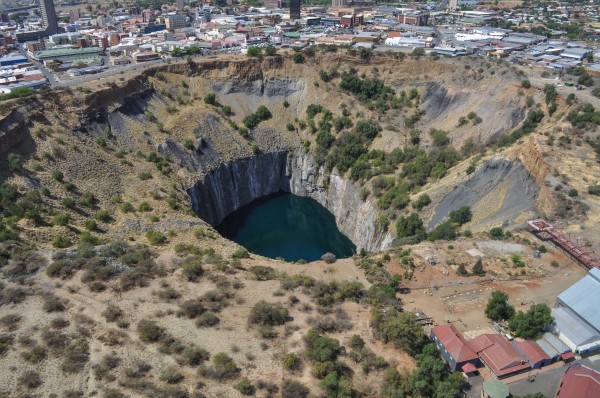
Aerial shot of the Kimberley Diamond Mine in South Africa’s Northern Cape province. The surface buildings of the mine are in the foreground.
Visiting the Cullinan Mine
The surface of the Cullinan mine resembles a massive factory. Huge lifts are hoisting thousands of pounds of kimberlite out of the mine and dumping them in piles for processing. Conveyor belts belts move the kimberlite through processing by crushing it down into smaller and smaller pieces. Upon arriving at the mine, you’ll have to change into coveralls and get outfitted with a headlamp and emergency oxygen tank. Then it’s into the mine via a massive underground elevator.
The elevators at Cullinan go down as deep as or 2,503 feet – nearly half a mile straight down. When the doors opened on the elevator, I expected to be in a cramped space that would be dark and difficult to get around in. I think most of my preconceived notions of what a mine would be like came from video games and turned out not to be the most accurate. I was shocked at how massive the mine was underground. Although it occasionally did get dark and narrow, most of the main tunnels of the mine were humongous and extremely well lit. How humongous? Well, when I visited the elevator to take us to 2,503 feet was out of service so we had to take a different elevator to 1,640 feet. When we got off the elevator we were so far away from where we needed to be that we flagged down a passing pickup truck and drove for nearly a half hour to get to the lower depth!
How Are Diamonds Mined?
The mine tunnels snake on for miles and miles. It takes awhile to get to where the actual mining takes place. Here I was also surprised to see that mining diamonds really involves no hard labor. Apparently this is why diamond mining is referred to as “gentlemen’s mining”. The process is this:
- Dig a really deep tunnel adjacent to a whole lot of kimberlite that (hopefully) contains diamonds.
- Go to where the normal rock meets the kimberlite and set off some explosions.
- Smash up the exploded chunks of kimberlite a bit more using a gigantic jackhammer.
- Transport the now smaller kimberlite using a TRAIN (did I mention there’s a full-blown train running around in the mine?!) to special lifts that bring it to the surface.
- Smoosh the kimberlite into smaller and smaller pieces through a series of conveyor belts and processing facilities. Since diamonds are the hardest object on earth, as long as you use compression, and not impact, you can eliminate the surrounding kimberlite without damaging the diamonds.
- Once the kimberlite is so small it’s more like mud, the substance is washed over special surfaces covered in beeswax and paraffin. Diamonds stick to the grease and the waste materials flow past.
- Pick out the diamonds and polish them up all nice and pretty.
Rare? How Rare?
On my visit to Cullinan, I was able to see nearly every step of the diamond mining process. I was surprised at how lax the mine was with so many visitors around. But as it turns out, diamonds are pretty hard to find. Our guide had worked in the mine for 40 years before becoming a tour guide and had never once actually found a diamond. Amazingly, for every 100,000 pounds of kimberlite the mine processes they only yield about 40 carats of diamonds! This makes diamond mining a fairly capital intensive business but of course with a big investment comes a big return.
In case you have scenes from Blood Diamond stuck in your head, what you’re imaging is a different process to uncover diamonds called alluvial mining. This process involves simply looking for diamonds in shallow water. You won’t find this type of mining in Southern Africa; it is this type of mining that often results in conflict diamonds.
How to Do It
In order to book an underground tour of the Cullinan Diamond Mine, contact Cullinan Tourism & History at cullinantourisminfo@telkomsa.net. An underground tour costs roughly $200 and takes about 4-5 hours including a surface tour, underground tour and visit to the showroom to see cutting and polishing. If you don’t want to go underground, there are other operators that book surface-only tours.

